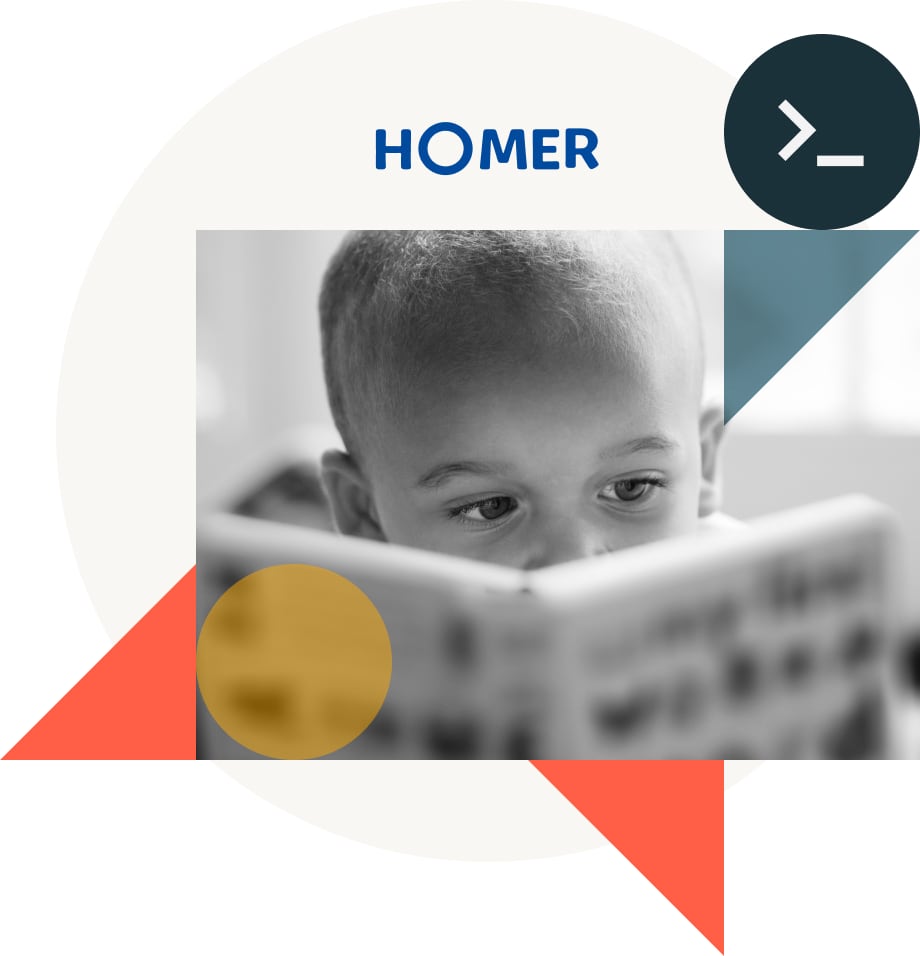Closing the early education gap with data
Increase in revenue

HOMER, an early childhood education company, aims to inspire a love of learning within children ages 2–8. HOMER’s digitally native approach to product development meant a mountain of data to tap into, but their dated systems didn’t provide the sophistication they needed to utilize it. Databricks enables the teams at HOMER to unify their data and glean invaluable insights that have guided their business to success, increasing student engagement and reducing overall churn.
Hundreds of millions of transactions with zero cohesion
The vast majority of childhood development happens before age 5, but the vast majority of investment in childhood education happens after that point — why this disconnect? Enter HOMER, an early childhood education company that aims to close that gap.
“Society hasn’t yet figured out the best way to measure learning,” explained Jin Chung, the Senior Director of Data Insights at HOMER. “Standardized testing, for example, is all over the place, so our goal is to approach growth with data and analytics. We want to make the early educational journey fun and effectively paced. And we want to provide the right vision to not only the child, but the parents as well, so they always understand what the best next steps are.”
In order to achieve this tricky goal, HOMER needed a system overhaul. As a digitally native company, they had vast amounts of information, but it was disorganized, disparate and inaccessible. HOMER needed a unified foundation to power their vision of a learning experience personalized to the needs of their young learners.
On top of disparate data, the teams at HOMER lacked a way to work together in order to speed up the analytics innovation process. “Without all the data joined in one place, we didn’t have an accurate view of the student and the record itself,” explained Neerav Vyas, the Head of Data, Insights and Analytics at HOMER. “This meant we ended up having lots of different individuals working on their solutions for the same problem instead of working together.”
Data federation unlocks incredible insights
HOMER started out their overhaul with a vision to aggregate all data in a way that made it usable by everyone. The process of getting a data lake up and running can often take up to two years with other platforms, but HOMER was ready in just six months with Databricks.
Once HOMER integrated the Databricks Data Intelligence Platform, the power of speed and scale kicked in. The teams were finally able to make sense of the hundreds of millions of event transactions that happen on a monthly basis. The unified view gave them a sense of how people were engaging with the app and with the content, progressing through the content, and so on. “Thanks to Databricks, we’re able to glean really valuable insights from our data and hand them over to our product teams in near real-time, cost-effectively and in a format that’s easy to digest,” said Jin. “This has been key to unlocking so much of our mission’s potential.”
Delta Lake not only provides them with the ability to centralize access to all of their data, but it powers highly performant and reliable ETL pipelines for downstream analytics and machine learning necessary to enable their personalized learning experiences. With MLflow, they can accelerate the delivery of these models to production.
Now, HOMER has a better understanding of their students, including their lifetime value and key conversion and churn moments. Based on these insights, they’ve been able to determine when and how they should interact with students to mitigate the potential loss, as well as obtain learnings that have helped shape their targeting strategies to improve student learning.
“A better understanding of the student drove the early models we built on Databricks,” said Neerav. “Once we got our data onto Delta Lake, we started building the models through MLflow surprisingly fast. It took us about six weeks to get our models from the first phase to out the door and running.”
A fully integrated system, no exceptions
Today, HOMER is completely integrated with Databricks, using the platform for everything from educating investors to making website design decisions. With all of their data federated in a centralized data lake, the ability to leverage all forms of analytics and machine learning has unlocked new opportunities to innovate and better support this underserved community.
Now they are exploring new ways to leverage Databricks to not only improve the learning experience of their students, but also increase operational efficiencies and visibility to key stakeholders across their organization.
“We now use Databricks for all of the key functions within our organization from internal decision-making through analytics to machine learning to power our student-facing solutions,” said Neerav. “We’re fully integrated, there is no exception to the rule. Databricks is our Holy Grail.”
With Databricks as the foundation of their data analytics efforts, HOMER has seen an increase in student engagement and performance. This has had a direct impact on student satisfaction, lowering overall churn, while increasing conversion to their paid offerings, which can have a significant impact on their top line. “Increasing engagement on our paid offerings is critical, as we can see on average $2–$4 million in revenue per point,” concluded Neerav. With Databricks helping drive anywhere from a 1%–5% increase in conversions, the estimated impact on revenue is upward of $20 million and growing. Needless to say, with data and AI powering their learning services to children, the future is bright for both HOMER and their students.

